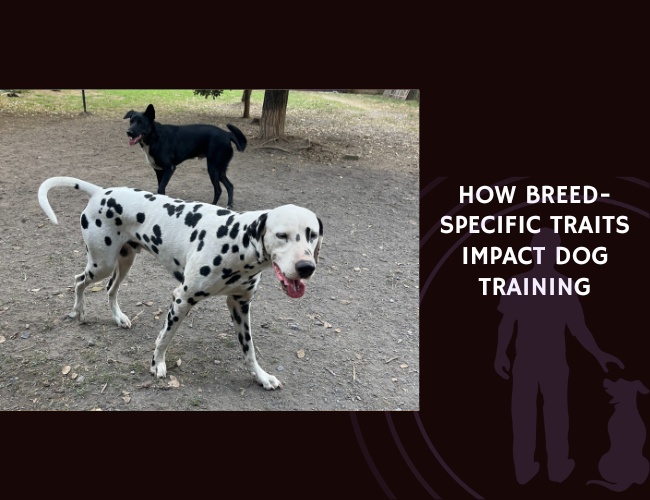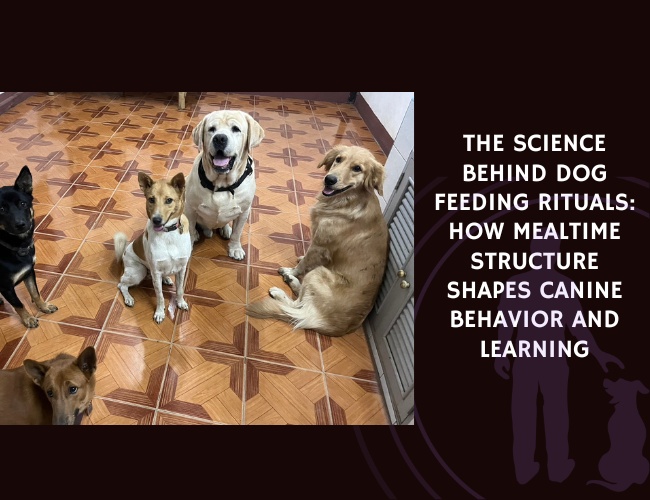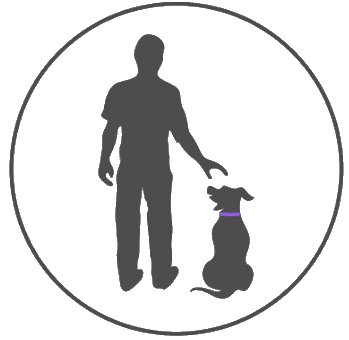Understanding Breed-Specific Physical Characteristics
When it comes to training dogs, one size does not fit all. Different breeds come with their own unique sets of physical traits that can significantly impact their training capabilities, limitations, and requirements. Understanding these breed-specific physical characteristics is crucial for developing effective training strategies tailored to each dog’s unique needs.
Size and strength variations among different breeds and their impact on training capabilities
Dog breeds vary greatly in size and strength, which can affect both their training capabilities and the methods used. Larger breeds like Great Danes and Saint Bernards have a combination of power and gentleness that requires a balanced approach in training to ensure they do not become unmanageable due to their size. Conversely, smaller breeds such as Chihuahuas and Pomeranians, while more delicate, may have no less spirited personalities.
The size of a dog influences everything from leash training to obedience exercises. For example:
- Large breeds need training that includes handling their strength, ensuring handlers can maintain control without relying solely on physical strength.
- Small breeds require more careful handling to prevent injury and might benefit from training that focuses on their quick, agile nature.
Physical limitations and advantages in training different sized breeds
Along with size, different breeds possess physical traits that can present unique training challenges and advantages:
- Large breeds may have joint issues like hip dysplasia, making strenuous, repetitive activities unsuitable. However, their large frames and often calmer temperaments can make them excellent candidates for tasks that require strength and stability, such as guiding or therapy work.
- Small breeds are agile and quick, making them excellent performers in activities such as agility courses. However, their size can make them more prone to injury during rough play or high-impact exercises.
Moreover, breeds with specific conformation issues, such as brachycephalic breeds (e.g., Bulldogs and Pugs), face unique challenges. Their shortened muzzles can make breathing more laborious, requiring modifications in training to ensure they are not overexerted, especially in hot weather.
How physical traits influence exercise requirements and training duration
A dog’s physical traits don’t just determine their training capabilities; they also significantly impact their exercise needs and the duration of training sessions. Here’s how different physical traits play a role:
- High-energy breeds like Border Collies or Siberian Huskies need substantial physical activity to burn off energy. They benefit from longer and more diverse training sessions that include lots of physical and mental stimulation.
- Low-energy breeds such as Basset Hounds or English Bulldogs, on the other hand, require less exercise and shorter training sessions. Overexerting these breeds can lead to health issues rather than benefits.
- Breeds with strong prey instincts (like Terriers) require training that includes controlled activities to manage their natural instincts. This can mean integrating plenty of exercises that mimic hunting behaviors in a controlled environment.
Each breed’s physical characteristics provide a foundation for how they can be most effectively trained, and understanding these traits is essential for any dog owner. By adapting training programs to fit the natural predispositions of various breeds, one can ensure not only more effective training but also better overall health and well-being for the dog.
Recognizing the impact of physical traits helps you create a more comprehensive training plan, preparing the groundwork as we delve into the equally essential aspect of temperament and cognitive traits in the next section.
Temperament and Cognitive Traits
When it comes to dog training, understanding breed-specific temperament and cognitive traits is crucial. This knowledge helps dog owners tailor their training methods to suit their dog’s unique characteristics. Let’s explore the different aspects of temperament and cognitive traits and how they impact training.
Breed-Specific Temperament Characteristics
Each dog breed has unique temperament traits that influence the training approach. Some dogs are naturally more energetic, while others are calm and laid-back. For example:
- Energetic Breeds: Breeds like Border Collies and Australian Shepherds are known for their high energy levels and enthusiasm. Their training sessions need to be dynamic and engaging to keep them motivated. Including activities like agility training or fetch can be effective.
- Calm Breeds: Breeds like the Basset Hound and the Bulldog are generally more relaxed and may require a gentle and patient training approach. Short and frequent sessions work best, focusing on consistency and positive reinforcement.
Understanding these temperament traits allows you to create a training environment that suits your dog’s natural disposition, making training a more enjoyable and successful experience for both of you.

Intelligence Variations Across Breeds
Dogs’ intelligence levels vary significantly across breeds, impacting their capacity to learn and respond to training. Stanley Coren, a renowned psychologist, ranked dog breeds based on their intelligence levels, considering factors like problem-solving ability and obedience.
- High Intelligence Breeds: Breeds such as Border Collies, Poodles, and German Shepherds are top-ranked for their intelligence. They pick up commands quickly and can perform complex tasks. Training these breeds should involve challenging exercises that stimulate their minds. Regularly introducing new commands and tricks keeps them mentally engaged.
- Moderate Intelligence Breeds: Breeds like Beagles and Bulldogs fall into this category. They may require more repetitions to learn new commands but can be effectively trained with patience and consistency. Utilizing positive reinforcement and breaking tasks into small, manageable steps can help.
- Low Intelligence Breeds: Breeds like the Afghan Hound and the Basenji are considered less responsive to training. This does not mean they are not smart; they might be more independent or easily distracted. Training these dogs can benefit from a calm environment with minimal distractions, using highly motivating rewards.
Cooperative vs. Independent Breed Tendencies
Cooperation levels also vary among breeds, influencing training scenarios and outcomes. Some breeds are inherently more cooperative, while others display independent tendencies.
- Cooperative Breeds: Breeds like Golden Retrievers and Labrador Retrievers are known for their eagerness to please their owners. They thrive on positive attention and are usually more willing to follow commands. Training these breeds can be a joyful experience as they respond well to praise and rewards.
- Independent Breeds: Breeds like the Shiba Inu and the Siberian Husky are more independent and may exhibit a strong-willed nature. Training these breeds requires understanding their independence and using techniques that appeal to their interests. Consistency and patience are key, as well as finding what motivates them the most, whether it’s a special treat or a favorite toy.
By understanding these temperament and cognitive traits, dog owners can develop training strategies that resonate with their dogs, leading to more effective and enjoyable training sessions. Tailoring your approach to your dog’s unique characteristics ensures they remain engaged and responsive during training.
As we navigate through breed-specific traits in dog training, it becomes apparent that each dog is unique, with individual quirks and qualities that influence their learning. Recognizing and respecting these differences not only enhances the training process but also strengthens the bond between you and your furry companion.
Effective Training Methods by Breed Type
Adapting training techniques to suit specific breed characteristics
Training dogs requires a careful understanding of breed-specific traits. Every breed comes with unique physical, mental, and emotional characteristics that necessitate tailored approaches to training.
For instance, working breeds like Border Collies and German Shepherds are known for their high intelligence and energy levels. These dogs thrive on challenge and mental stimulation. Training sessions for such breeds need to be dynamic, incorporating various commands and activities to keep their interest piqued. Incorporate agility training and advanced obedience exercises to ensure they remain engaged.
On the other hand, breeds like Bulldogs or Basset Hounds may have a more laid-back approach. These breeds may need shorter and more consistent training sessions. Repetition and patience are key. Use clear commands and consistent rewards to reinforce learning.
Positive reinforcement effectiveness across different breed personalities
Positive reinforcement stands as a highly effective method of training across various breeds. This technique involves rewarding the dog for good behavior, making them more likely to repeat these actions. Rewards can be treats, praise, or playtime, depending on what motivates the dog.
For example, Golden Retrievers and Labradors are typically very food-motivated. Using treats as rewards can enhance their learning experience. However, it’s crucial to balance treat-based rewards with other forms of positive reinforcement to prevent overfeeding.
Breeds such as Huskies or Malamutes, known for their independent streak, may respond better to rewards that align with their natural behaviors. These breeds often enjoy physical rewards like playing fetch or engaging in activities that allow them to utilize their endurance and strength.
Breed personalities vary significantly, therefore it’s important to observe what motivates your dog the most and use that as part of your training regimen.
Breed-specific response patterns to various training approaches
Understanding how different breeds respond to training approaches can significantly improve the effectiveness of your training regimen.
Herding breeds, such as Australian Shepherds or Border Collies, are naturally responsive to directional commands. They excel in obedience and agility training, often requiring few repetitions to learn a new task.
Conversely, scent hounds like Beagles or Bloodhounds require more patience. These breeds have a strong instinct to follow scents, making them easily distracted. Training should focus on harnessing their scenting abilities positively and patiently steering them back on track when they become sidetracked.
Guard dog breeds, such as Rottweilers or Dobermans, need a firm and consistent hand. They are intelligent and can be trained to perform complex tasks, but it’s essential to establish clear boundaries and maintain a consistent training routine to foster obedient behavior.
Toy breeds like Chihuahuas or Pomeranians may display a blend of independence and a desire for attention. Training methods should be gentle, encouraging positive behavior with praise and high-value rewards while setting boundaries diplomatically.
To summarize, adjusting training methods to match breed-specific needs doesn’t just entail applying one-size-fits-all techniques but understanding the subtle nuances of each breed’s physical and psychological makeup. This makes the training process not only beneficial but also enjoyable for both the dog and owner.
As we move forward, it’s important to remember the individuality within each breed and how this influences training success. Understanding and adapting your training to suit these traits will help you form a better bond with your dog while ensuring effective learning.

Individual Variations Within Breeds
Understanding that individual dogs within the same breed can have varying personalities and traits is vital for successful training. While breed tendencies can provide a general idea, recognizing and adapting to individual differences ensures a more effective and harmonious training experience.
Understanding and Accounting for Individual Personality Differences
Just like humans, dogs possess unique personalities shaped by their genetics, environment, and life experiences. These nuances play a significant role in shaping their behavior and training responses.
- Personality Spectrum: Some dogs within the same breed may be more energetic, while others are calm. For example, among Labrador Retrievers, you might find both highly active dogs that need constant mental stimulation and more relaxed individuals that prefer less intense activities.
- Behavioral Quirks: Individual dogs can exhibit specific behavioral quirks that set them apart. A Beagle might have a stronger prey drive than its littermates or show more independent behavior.
- Adaptability: Paying attention to these unique characteristics allows trainers to adapt methods accordingly. A patient approach with positive reinforcement is key to addressing and leveraging these individual traits effectively.
Role of Age, Experience, and Socialization in Training Success
Age, experience, and socialization are critical factors in determining a dog’s training success. Each of these aspects influences how dogs perceive and respond to training.
- Age: Training younger dogs typically differs from training older dogs. Puppies are often more malleable and can quickly pick up basic commands. However, they also have shorter attention spans and higher energy levels. Older dogs, on the other hand, may have ingrained habits that require gentle correction and patience.
- Experience: A dog’s prior experiences, including past training, significantly impact current training methods. Dogs that have had positive experiences learning new commands will likely respond better than those with negative training histories.
- Socialization: Dogs exposed to various environments, people, and other animals from a young age usually adapt better to training scenarios. For instance, a well-socialized Border Collie might excel in agility training compared to a less socialized counterpart who may be timid or distracted.
Recognizing these elements helps in tailoring the training process to each dog’s specific needs and strengths.
Balancing Breed Tendencies with Individual Characteristics
While breed tendencies offer valuable insights, balancing these generalized traits with individual characteristics is essential for effective training.
- Customized Approach: It’s important to blend breed-specific knowledge with insights gathered from observing the individual’s behavior. For instance, a German Shepherd known for diligence and intelligence might vary in how they express these traits individually. One might need complex tasks, whereas another may require simpler, consistent routines to feel confident.
- Reward Preferences: Identifying what motivates an individual dog enhances training efficiency. While some dogs are food-driven, others might respond better to praise, toys, or playtime. Understanding these preferences enables trainers to apply the most effective reinforcement strategies.
- Training Pacing: Adapting the pace of training to suit the dog’s learning speed is another significant factor. A Jack Russell Terrier might need quick, engaging sessions, while a more laid-back breed may benefit from slower, steady training.
Balancing these personal nuances with the inherent breed tendencies ensures the overall training approach is comprehensive and considerate.
Recognizing the importance of individual variations within breeds allows dog owners and trainers to create a respectful, understanding, and effective training environment. Each dog, despite its breed, is unique and deserves a customized approach tailored to its specific needs and characteristics. By emphasizing individuality within breed-specific frameworks, we foster better communication, stronger bonds, and more successful training outcomes.
Handler Considerations and Adaptation
Training a dog is a partnership, relying on the synergy between the handler and the dog. The handler’s experience, training style, and capabilities are instrumental in determining the success of the training process. In this chapter, we discuss the importance of aligning these factors with the breed-specific needs of the dog. An adaptive approach can bridge the gap between the handler’s skills and the dog’s unique characteristics.
Importance of handler experience and training style
Experienced handlers typically have a deeper understanding of canine behavior and effective training techniques. They can read subtle cues from the dog, make real-time adjustments, and demonstrate consistent leadership, which enhances the dog’s responsiveness. New or less experienced handlers might find certain breeds more challenging, especially those with high energy or independent streaks.
- Patience and Consistency: Essential traits for any handler, these qualities are particularly crucial when working with breeds that require repetition and a calm demeanor, such as Basset Hounds or Bulldogs.
- Adaptability: The ability to modify techniques based on the dog’s responses ensures continued progress. This is important for breeds like the Border Collie, which may need more stimulating exercises compared to the laid-back Pug.
Training styles can vary widely, including positive reinforcement, clicker training, and more traditional methods. For instance, positive reinforcement training, which uses rewards to encourage desired behaviors, is generally well-received across breeds but should be tailored to individual motivators—some dogs work for treats, while others may prefer toys or praise.
Matching handler capabilities with breed-specific needs
Each dog breed comes with predisposed traits that influence how they should be trained. Matching these traits with the handler’s strengths can lead to more effective and enjoyable training sessions.
- High-Energy Breeds: Dogs like Border Collies and Australian Shepherds thrive with active handlers who can provide mental and physical stimulation.
- Guarding Breeds: Breeds such as German Shepherds and Rottweilers benefit from handlers who exhibit firm, consistent leadership.
- Companion Breeds: Breeds like Cavalier King Charles Spaniels may respond better to handlers who offer gentle handling and ample affection.
If a handler’s natural training style doesn’t perfectly align with the dog’s needs, adaptive strategies can bridge the gap, ensuring both handler and dog are comfortable and effective in their roles.
Strategies for adapting training methods to both breed and handler
Tailoring the training approach involves adapting to both the breed’s characteristics and the handler’s abilities. Here are strategies to achieve this balance:
- Enhance Knowledge: Handlers can improve their understanding of breed-specific traits and training needs through resources such as breed training guides, online courses, and expert consultations.
- Utilize Correct Equipment: Some breeds may benefit from specific training tools. For example, harnesses may be better for dogs prone to pulling, whereas head halters can give more control over large, strong breeds.
- Set Realistic Goals: Considering the breed’s typical learning pace and the handler’s experience level can help set achievable training milestones. Initial goals should be simple and gradually increase in complexity.
- Incorporate Play: For high-energy breeds, incorporating play into training keeps sessions fun and engaging, ensuring the dog remains attentive.
- Focus on Bonding: Building a strong handler-dog bond through trust and positive experiences is critical. This lays the foundation for effective training and cooperation.
Creating a harmonious training environment demands recognizing the compatibility between the dog’s breed tendencies and the handler’s skills. Adaptable methods and clear communication can transform challenges into successes, making the training journey rewarding for both parties.









